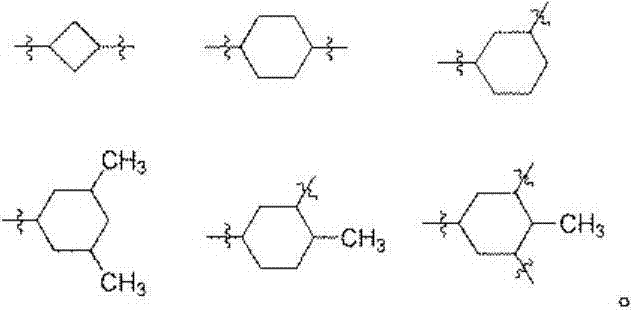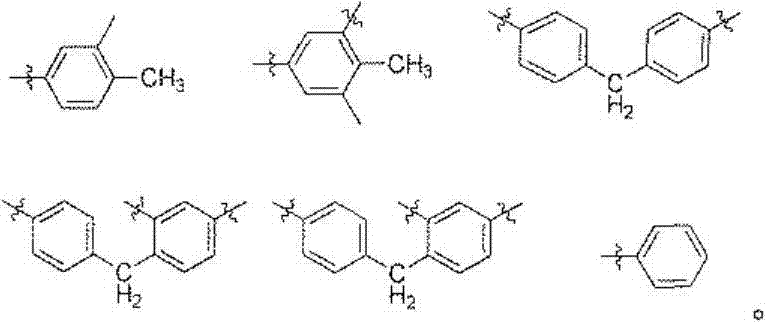Photochromic polymers
A photochromic and polymer technology, applied in the direction of color-changing fluorescent materials, optics, optical components, etc., can solve the problem of reducing attractiveness in industrial production
- Summary
- Abstract
- Description
- Claims
- Application Information
AI Technical Summary
Problems solved by technology
Method used
Image
Examples
Embodiment 1 and 2
[0292]
[0293] step 1:
[0294] Polycaprolactone diol (1.02g, average M W =2,000), succinic anhydride (0.153g), triethylamine (0.21mL) and 4-dimethylaminopyridine (0.25g) were combined in anhydrous dichloromethane (about 10rnL), then heated at 35°C for 2 Hour. Poly(ethylene glycol) monomethyl ether (0.18 g, average MW=350) was added, and the mixture was stirred for another 20 minutes. The solvent was evaporated in vacuo, the residue was dissolved in diethyl ether and washed three times with dilute HCl followed by brine. Using MgSO 4 The organic layer was dried and filtered through a plug of silica gel. The solvent was evaporated under vacuum to give the product polycaprolactone disuccinate as a waxy solid (0.341 g). A second crop was washed from the silica gel plug with ethyl acetate (0.272 g). The first batch of products passed 1 Analysis by H NMR gave a calculated average molecular weight of 2,560 (n PCL = 19.8). This material was used in the next step.
[0295...
Embodiment 2
[0301] pass 1 HNMR analysis of the two components confirmed their structures as naphthofuran-terminated polycaprolactone conjugates with average molecular weights of 2,685 (n PCL =11.4) and 4,146 (n PCL = 24.2), calculated from the integration of resonance peaks of selected polymers and naphthofuran end groups.
Embodiment 3
[0303]
[0304] step 1:
[0305] Poly(diethylene glycol adipate) (0.945 g, polyester diol, average MW = 2,761) was mixed with succinic anhydride (0.096 g), triethylamine (0.13 mL) and 4-dimethyl Aminopyridine (0.015 g) was combined in anhydrous dichloromethane (ca. 5 mL), and the mixture was heated at 35° C. for 1 hour. Poly(ethylene glycol)-300 (0.096 g) was added, and the mixture was stirred for an additional 10 minutes. The solvent was evaporated in vacuo, the residue was dissolved in EtOAc and washed three times with dilute HCl followed by brine. Using MgSO 4 The organic layer was dried, filtered, and the solvent was evaporated under vacuum to give the product poly(diethylene glycol adipate) disuccinate as a viscous colorless oil. pass 1 H NMR (CDCl 3 ) analysis indicated that the reaction was complete, and the calculated average molecular weight was 3,047 (n PDGA = 12.7).
[0306]
[0307] Step 2:
[0308] Poly(diethylene glycol adipate) disuccinate (0.274 g...
PUM
 Login to View More
Login to View More Abstract
Description
Claims
Application Information
 Login to View More
Login to View More - R&D
- Intellectual Property
- Life Sciences
- Materials
- Tech Scout
- Unparalleled Data Quality
- Higher Quality Content
- 60% Fewer Hallucinations
Browse by: Latest US Patents, China's latest patents, Technical Efficacy Thesaurus, Application Domain, Technology Topic, Popular Technical Reports.
© 2025 PatSnap. All rights reserved.Legal|Privacy policy|Modern Slavery Act Transparency Statement|Sitemap|About US| Contact US: help@patsnap.com



